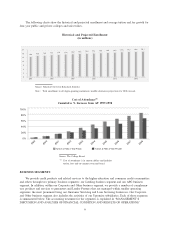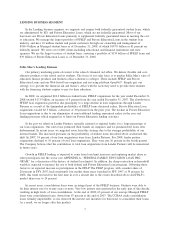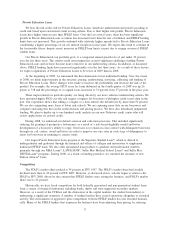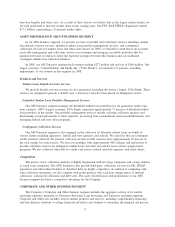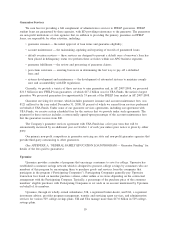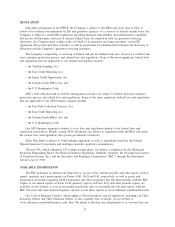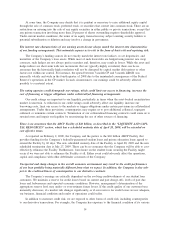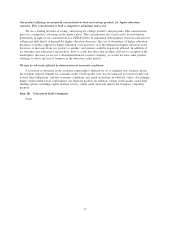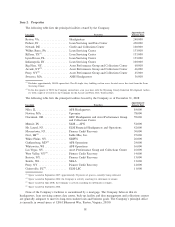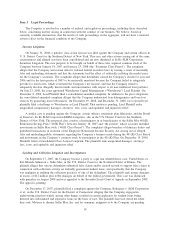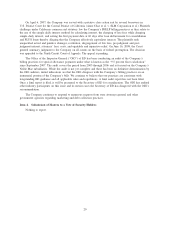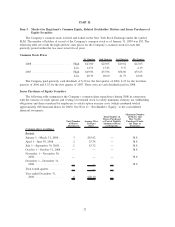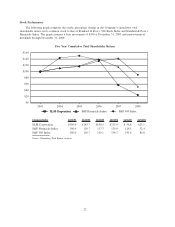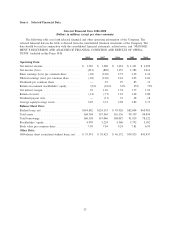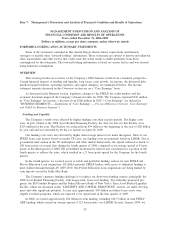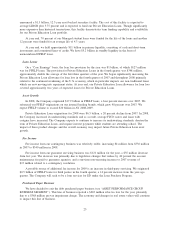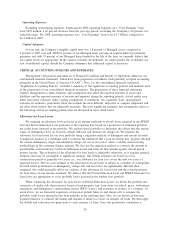Sallie Mae 2008 Annual Report Download - page 17
Download and view the complete annual report
Please find page 17 of the 2008 Sallie Mae annual report below. You can navigate through the pages in the report by either clicking on the pages listed below, or by using the keyword search tool below to find specific information within the annual report.Our operations rely on the secure processing, storage and transmission of confidential and other
information in our computer systems and networks. Although we take protective measures, our computer
systems, software and networks may be vulnerable to unauthorized access, computer viruses or other malicious
code and other events that could have a security impact. If one or more of such events occur, this could
jeopardize confidential and other information processed and stored in, and transmitted through, our computer
systems and networks, or otherwise cause interruptions or malfunctions in our operations which could result in
significant losses or reputational damage. We may be required to expend significant additional resources to
modify our protective measures or to investigate and remediate vulnerabilities or other exposures, and we may
be subject to litigation and financial losses that are either not insured against or not fully covered through any
insurance maintained by us.
We routinely transmit and receive personal, confidential and proprietary information. We have put in
place secure transmission capability, and may not be able to ensure secure transmissions and we may not be
able to ensure that third parties with whom we work have appropriate controls in place to protect the
confidentiality of the information. An interception, misuse or mishandling of personal, confidential or
proprietary information being sent to or received from a customer or third party could result in legal liability,
regulatory action and reputational harm.
Incorrect estimates and assumptions by management in connection with the preparation of our consolidated
financial statements could adversely affect the reported amounts of assets and liabilities and the reported
amounts of income and expenses.
The preparation of our consolidated financial statements requires management to make certain critical
accounting estimates and assumptions that could affect the reported amounts of assets and liabilities and the
reported amounts of income and expense during the reporting periods. A description of our critical accounting
estimates and assumptions may be found in “MANAGEMENT’S DISCUSSION AND ANALYSIS OF
FINANCIAL CONDITION AND RESULTS OF OPERATIONS — CRITICAL ACCOUNTING POLICIES
AND ESTIMATES” in this Form 10-K. If we make incorrect assumptions or estimates, we may under- or
overstate reported financial results, which could result in actual results being significantly different than
current estimates which could adversely affect our business.
Changes in laws and regulations that affect the FFELP in particular and consumer lending in general
could affect the profitability of our business.
The FFELP portion of our business is authorized under the HEA, which is amended by Congress from
time to time. ED administers the FFELP and modifies its guidance from time to time. We are also subject to
various state and federal laws and regulations that govern our private credit lending and debt collection
businesses.
Changes in laws and regulations that govern our businesses affect the profitability and viability of our
businesses. For example, amendments made to the HEA in 2007 significantly reduced the profitability of our
FFELP business. Also, the Administration’s budget for the 2010 fiscal year, submitted to Congress on
February 26, 2009, includes proposals that could impact significantly the FFELP. It is possible that future
changes in laws and regulations could negatively impact our ability to grow and be profitable. The
Administration’s budget request and the current economic environment may make legislative changes more
likely, making this risk to our business greater.
We operate in a competitive environment.
The financial services industry is highly competitive. We compete with banks and other consumer lending
institutions, many with strong consumer brand name recognition. The market for federally-guaranteed student
loans is shared among the Company and other private sector lenders who participate in the FFELP and the
federal government through the FDLP. We compete based on our products and customer service. To the extent
our competitors compete aggressively or more effectively, we could lose market share to them.
16


